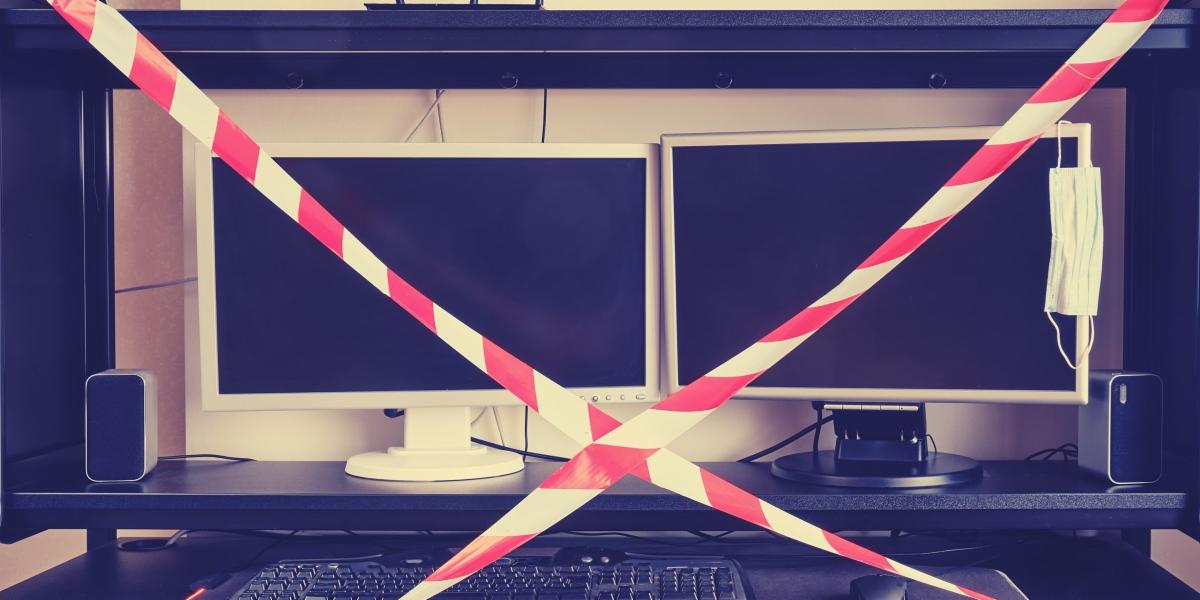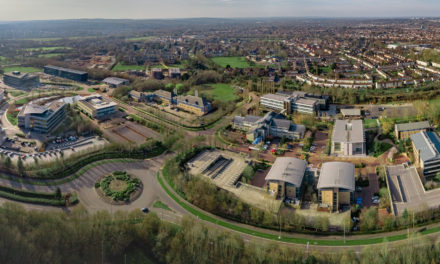Given the deluge of information around the post-COVID-19 workplace, David Thomas, partner at Reading-based property consultants and Thames Tap sponsor, Vail Williams LLP, offers some considerations ahead of a staged return[i] to the workplace.
Before reopening the office
As an employer, you will need to undertake a risk assessment before opening the office and ensure your landlord has put in place adequate procedures to protect staff, which we detail below. This includes making sure adequate cleaning has taken place, as well as legionella testing and ensuring that the planned changes to the environment do not put your employees at risk.
Consideration should also be given about who should return to the office – who is critical to the business operation. And who might be unable to work effectively at home. This might be for a host of reasons, from adequate space or relationship issues, to mental health and so on.
Depending on the number of people, you may want to consider a rotation system of teams, each having one week in the office, whilst the other is not.
Before leaving the house
Before contemplating a return to the office you need to ensure you have the necessary procedures in place to remind staff how to monitor themselves and people they live with, daily, should they show any COVID-19 symptoms.
In this instance, they should follow NHS advice[ii] on self-isolation individually or as a household and should not attend the office.
Consideration should also be given to staff living with vulnerable people, or those shielding, as well as frontline workers who are at greater risk and whom you may wish to continue to work from home.
Staff may also be encouraged to bring their own food to limit time in kitchens, cafeterias or break out areas.
The commute
Many staff who rely on public transport may want the ability to travel outside peak times to reduce the risk of exposure, and you will want to make sure that your employees are aware of the latest information and advice with regard to face mask requirements.
Both tenants and building owners may need to consider increasing their provision of cycle parking and shower facilities to accommodate changes to commuting patterns, particularly in areas more reliant on public transport.
Arriving at the office
Where possible, consideration should be given to prioritising the use of automatic doors and should provide hand sanitisers at either side of entrance points to buildings.
Visual reminders on floors and walls with regard to social distancing will be useful, particularly in entrance lobbies or areas likely to generate a concentration of people, such as lifts or single flow staircases. Here, guidance should be provided to limit the number of people within close proximity.
Where you are not in control of your own building, ask your landlord now what plans they are putting in place to reduce risk to your employees.
You may wish to stagger the arrival of staff by creating different start times for the working day which could reduce the number of people both on public transport at peak times, as well as within your building’s lobbies and lifts, thereby limiting the potential risk of transmission.
Full height screens for reception or security staff who come into contact with a lot of people, should be considered, alongside risk assessed procedures and cleaning regimes for signing into buildings, as well as for delivery and collection to and from the site.
There should also be a risk assessment in place for visitors to the building, which takes into account people who may be symptomatic.
In the office
Many workplaces today are designed based on occupancy levels of between one and eight square metres per person and have bench desking in an open plan environment with limited screens between desk spaces.
It’s time to move away from agile working practices for the foreseeable future in favour of keeping staff at the same workstations rather than hot-desking, with the additional provision of cleaning products and sanitisation of working areas.
A socially distanced office will need at least 16 square metres per person, so think about how you can implement this practically, using alternate desks and, subject to regular cleaning, having a rotation system in place to enable employees to work safely in the office some of the time, or from home.
You also need to plan for any pinch points in high traffic areas which may preclude the use of some desks due to proximity and put in place visual reminders in communal space such as kitchens and copy areas, to maintain social distancing eg one person at a time.
Ensure that commonly used equipment is regularly wiped clean and that hand sanitisers are available in these areas for use both before and after.
With such a virulent airborne disease as COVID-19, they may be little value in erecting perspex ‘sneeze guards’ between desks. Whilst supermarkets have these in place for cashiers, this is largely to do with the associated risk of coming into contact with the number of people that they do on a daily basis. Within the office environment, this is not likely to be required.
In line with Public Health England advice, regular handwashing and not touching the face remain the best means of protection and should continue, as should the regular cleaning of the office environment.
In fact, cleaning and disinfection of the office should increase, and staff should maintain a strict clear desk policy at the end of the day to allow all surfaces to be cleaned. Staff should be encouraged to only use their own IT equipment.
Facilities management regime
According to the British Council for Offices (BCO), depending on the type of building services installed in your office, either your on-site FM team or your landlord should adapt their regime to ensure mechanical ventilation dilutes contamination and negative pressure is maintained in WC areas.
Humidification also needs to be monitored and, in line with current BCO guidance, buildings with recirculation systems may benefit from increased replacement of filters to trap potential contaminants.[iii] However, advice from engineers may vary, depending on each specific system.
Ideally, the building would have natural ventilation and open windows would be preferable, although not whilst other heating and cooling systems are running to avoid wasting energy and adding, unnecessarily, to carbon dioxide in the atmosphere.
Procedures and cleaning regimes also need to be reviewed, enabling increased cleaning of common areas and WC facilities.
Social distancing within toilets needs to be enabled, such as limiting the number of urinals and sinks in use and, according to the BCO, ensuring toilet lids are closed before flushing to reduce airborne particles. You will also need to continue to provide more antibacterial soaps and hand sanitiser, as before lockdown.
Procedures should also be in place to isolate and deep clean areas should someone in the office present with symptoms at work.
Meetings
Whilst many have adapted to online meetings, physical meetings may take place. However, you should be mindful of maintaining a distance of two metres between people in meeting rooms. This may mean that a six-person meeting room needs to be limited to two occupants, for example.
Some floorplans we have seen show workers allocated to permanent desks in meeting rooms. This needs to be reviewed with the expectation that meetings will be required, whilst allowing private areas for on-line Teams or Zoom calls.
When the weather permits, you may also wish to consider ‘walking meetings’ which will also have a positive mental and physical impact on employees.
Finally, it is worth also allowing at least 15 minutes between meetings to enable surfaces to be cleaned before and after use.
Of course, this is not an exhaustive list and it may not cover all office and workspace configurations. Requirements will also change as and when Government guidance evolves in this area, so for the latest information, contact Vail Williams.
[i] https://www.gov.uk/coronavirus
[ii] https://www.nhs.uk/conditions/coronavirus-covid-19/
[iii] http://bco.org.uk/Research/Publications/Thoughts_on_Office_Design_and_Operation_After_Covid-19.aspx
© Thames Tap No 209 (powered by ukpropertyforums.com)













